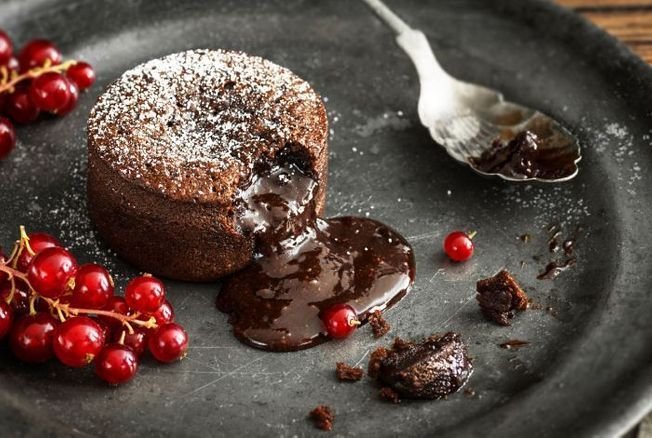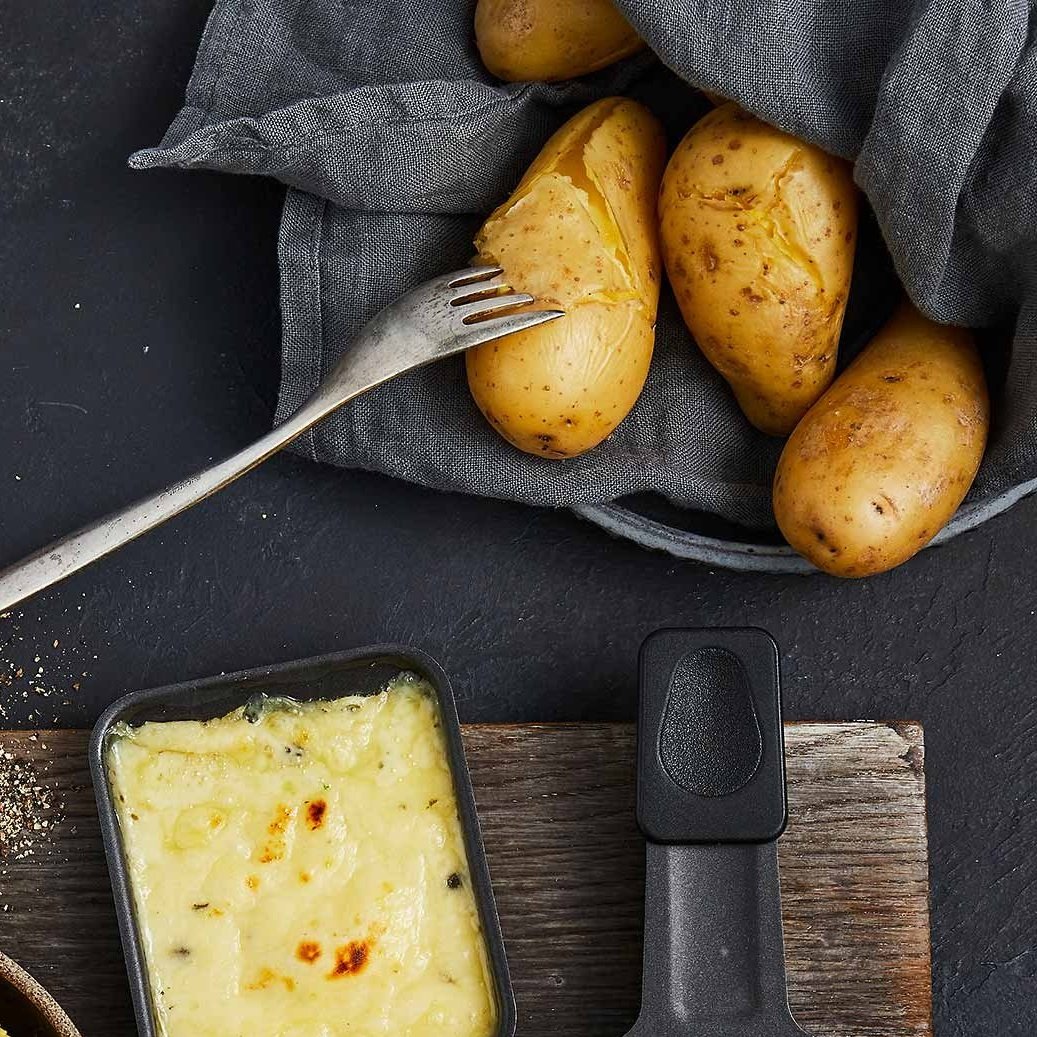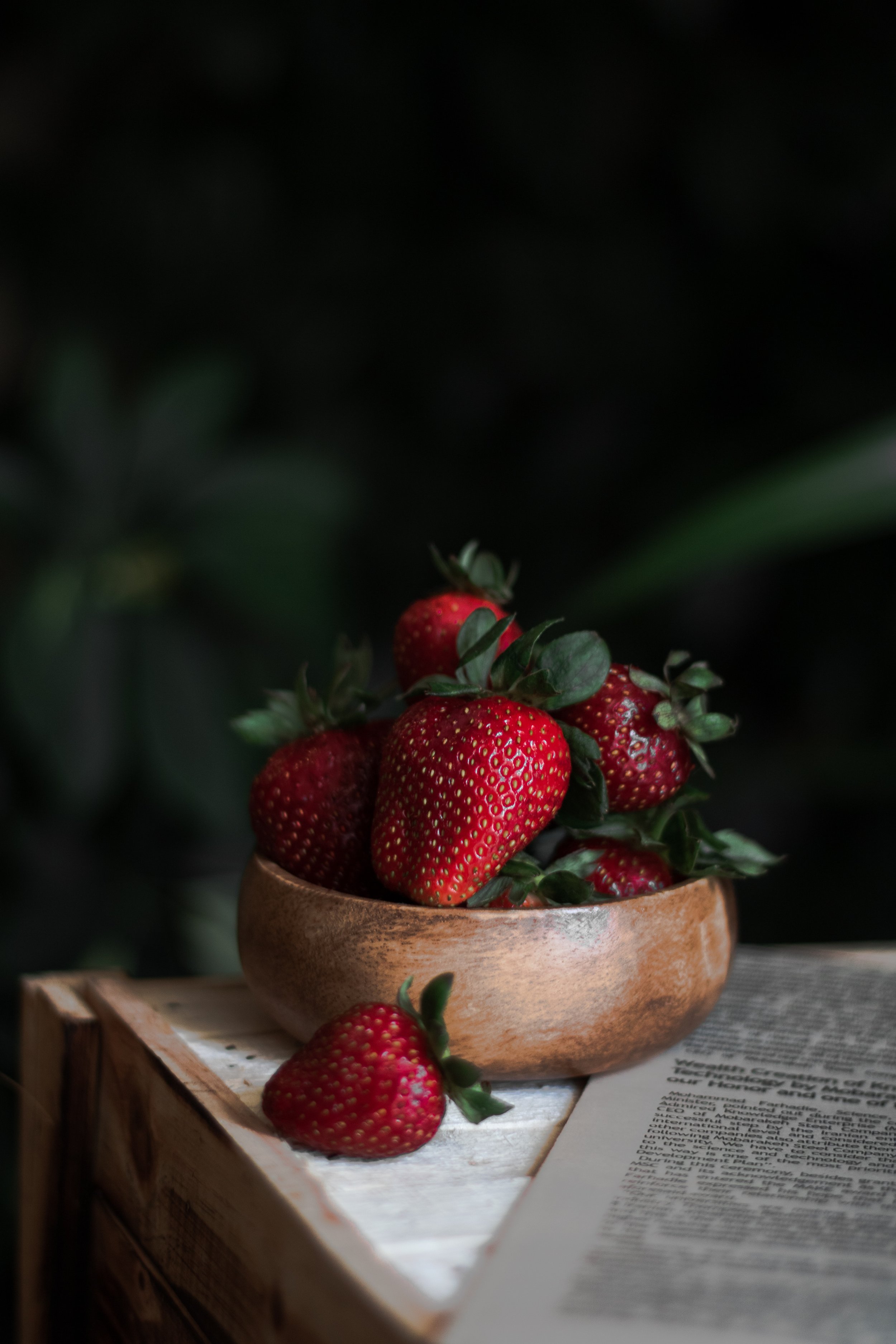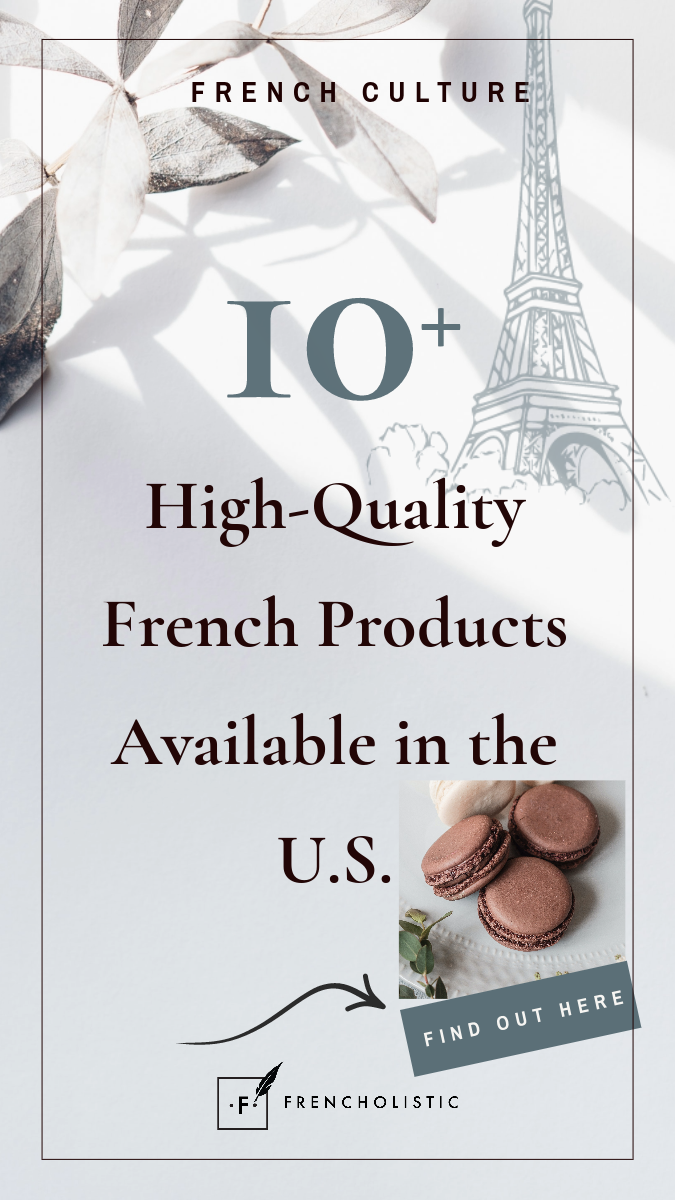The Best 10+ French Products You Can Buy in the U.S.
Bonjour ! Hello!
When I moved to the United States ten years ago, I still needed to learn how much I would miss some of the basics I found everywhere in France.
Over the years, I've managed to track down some of the French products I've missed the most, and today, I will share with you where you can find them in the US and why I love them so much.
Many of the products I missed were food, but not only!
7 FACTS ABOUT FRENCH PEOPLEMost French people eat their three meals at the same hour.
French eat breakfasts around 8 am, lunch around 1 pm, and dine around 8:15 pm (source INSEE).
68% of French people said in 2018 that they loved to cook every day.
The French spend an average of 53 minutes cooking per day (Americans 30 min)
43% of French people declare that they have a low-sugar diet and thus limit its consumption in their diet.
62% of French say they follow a balanced diet.
The French spend more than 2 hours per day eating against 1 hour for the Americans (source OECD).
This post contains affiliate links (marked with an *), which means I get a small kickback when you purchase something at no extra cost. I am affiliated only with select resources that I love and use myself.
1. Baking Chocolate
The French love to make pastries and especially with chocolate. Chocolate is such a popular flavor in France that there are famous shops (des chocolatiers) where only chocolate products are sold! These chocolatiers are artists in their own right, and the quality of their chocolates is incomparable.
One of my favorite chocolate desserts is chocolate fondants. This quick and easy dessert has two critical elements to its success: baking and chocolate. The baking must be just right so that the outside is crispy and the inside is runny. The mixture of the two textures is incomparable, provided that you have used quality baking chocolate. I tried making this and other chocolate recipes with several American chocolates, and unfortunately, the results were meh.
For a long time, I asked my parents to send me my favorite chocolate by parcel: Nestlé Dessert Baking Chocolate 52%* until I discovered two years ago that I could finally buy some in the United States!
I like this chocolate so much because it is perfectly balanced. It's a delicate dark chocolate without being bitter or sweet, with a slight touch of vanilla.
I share my family's chocolate fondant recipe for gastronomes who want to try this excellent chocolate!
CHOCOLATE FONDANT - 5/6 SERVINGS. 200 gr. of Nestlé Dessert Baking chocolate
. 100 gr. of butter
. 4 whole eggs
. 100 gr. of sugar
. 50 gr. of flour
. 2 tablespoons dark rum
Put the butter, sugar, and chocolate in a saucepan over low heat. Stir gently without stopping. Add the flour and then the four whole eggs when it is creamy and well mixed. Continue stirring until you have a very smooth mixture. Add the two spoons of rum. Don't worry. All the alcohol in the rum will evaporate during cooking, and all that will remain is an exquisite flavor.
Note: don't add more flour than the recipe; it will ruin this dessert completely.
Pour the mixture into 5 to 6 buttered baking porcelain ramekins. Preheat your oven. Bake for 7 to 10 minutes at 392° F. Unmold the fondants into a small dessert plate and serve warm with a few fresh mint leaves, vanilla ice cream, or even both!
2. French Yogurts
When it comes to yogurt, I am very picky, and I'm not fond of Greek yogurt, so the choice is limited.
However, I did find Yoplait French Style Yogurt* (vanilla flavor), which I can’t get enough of!
They are super creamy with a perfect texture, and I enjoy eating them in a glass jar even more. It adds un-je-ne-sais-quoi, which makes all the difference! They have many flavors, but the other flavors I tried were too sweet for my French taste!
3. Thermal Spring Water
For those like me with sensitive and dry skin that doesn't tolerate much, thermal water is a must-have. Sometimes, my skin couldn't stand anything to clean it. I have tried countless products on my skin, from the cheapest to the most expensive.
The only product I have always kept is Eau Thermale Avene Thermal Spring Water, Soothing Calming Facial Mist Spray for Sensitive Skin*.
It has always brought me a soothing, moisturizing, and anti-inflammatory effect. Its secret lies in its natural mineral composition that allows for therapeutic use. It possesses a set of characteristics that give its health-promoting properties, recognized by the National Academy of Medicine. Today, pathologies as chronic and invalidating as atopic dermatitis, eczema, psoriasis, scarring, or burns improve thanks to the thermal Spring of Avène cure.
For those a little curious, Avène originates its brand name from Avène Les Bains, a village in the Hérault in Occitanie, not very far from Montpellier. This village is famous for its thermal spring water and spas resort where people come for cures.
4. Crème Fraîche
Crème Fraîche is a staple of French cuisine as it brings lightness and smoothness, and we use it for salty and sweet dishes. It's a kind of sour cream, but there's a freshness and delicacy that I don’t find in the sour cream. Finding this product in the United States is challenging (and extremely expensive!), but Trader Joe's has an excellent and affordable one.
This product has been used in France since the Middle Ages. It would become a staple of the kings' chefs, specifically Carême, for preparing delicate gravy and pastries. In France, you can find Crème Fraîche in different thicknesses.
If you want to try it:
Slice some fresh strawberries in a bowl.
Take 2 or 3 tablespoons of crème fraîche, to which you add one pack of Alsa Vanilla Sugar (see product #11).
Mix well and add to the bowl of strawberries!
And voilà!
5. Croissants
French people love their croissants, but when they have been freshly baked. Usually, they are baked early in the morning, but some bakeries make a second batch in the afternoon; like this, people can also buy some freshly baked croissants after school or work. The croissants I have found in the United States, very unfortunately, can barely be called croissants, except those I found in Trader Joe's! The 8 Mini Croissants are frozen and tiny, but after being baked in the oven for 15 to 30 minutes, you'll have crunchy and delicious croissants! They also have chocolate croissants (the name is incorrect; in French, we call them ‘pain au chocolat,’ that is, ‘bread with chocolate’). They are good but too sugary.
6. Buckwheat Flour
The galette is a staple of Brittany, northwest of France, where I was born. They are prepared with buckwheat (sarrasin in French). Originally from China, the Crusaders brought back this black wheat with pink flowers and no gluten from the Crusades in the 12th century.
This preparation is effortless, but it's delicious, and you can prepare it in so many ways that everybody can find their favorite galette. Traditionally, we cook it in Brittany with a wood-grilled sausage or ham, Swiss cheese, and an egg (called 'la complète').
I could find precisely the buckwheat flour (Treblec)* I was buying in France. I order it regularly so I stay supplied.
The galette batter combines buckwheat flour, water, and salt. Some add one egg, but not in the region of Brittany where I come from. The batter should be more liquid than the crepes.
Since this flour is gluten-free, it does not make lumps. It should be beaten with a spoon or by hand to aerate it. It should have a few bubbles. It must be left in the fridge for one or two hours. In Brittany, they have big plates that they call the Bilig, but a simple crepe pan can do the trick. The temperature must be very high. The dough being with a lot of water, the galettes cook more slowly than the crêpes. The dough on the hot grill or crepe pan should sizzle, and the galette should be full of holes. Add grated Swiss cheese, ham, and an egg, and fold the sides of the galette when the filling is well-cooked. Add a little fresh butter and spread it on the galette before serving.
To better show you how to make them, I've attached a video of a Breton man making galettes for his wife, who is not Breton.
7. Orangina
I don't usually drink soda, but I am nostalgic for the Orangina of my childhood. This French drink, created in 1936, is a mixture of sparkling water, orange juice, and other citrus fruits with a bit of pulp that requires you to shake the bottle before drinking. Only the drink sold in glass bottles, whose shape and granulated texture remind of an orange, is the original recipe without preservatives.
I used to find Orangina at Trader Joe’s, but lately, they seem out of stock.
However, I found an online store, Le Panier Français, that sells them and ships products very quickly.
8. Raclette Cheese
Raclette is a Swiss cheese that became the name of a dish. In the Middle Ages, the way to prepare this "raclette" was to melt cheese near a heat source such as a fireplace and then "scrape" (racler) it to make the cheese flow into the plate. The cheese eventually traveled across the Swiss border to the French region of Savoie. The French invented the raclette machine in the seventies, spreading this recipe throughout France.
Like many French people, I love this cheese and this very friendly dish. In France, potatoes are cooked in water with the skin on. Then we prepare a flat plate with different cold cuts placed with the potatoes and the Raclette machine in the center of the table. Each person peels their potatoes and places them on their plate along with cold cuts, on top of which the melted cheese is drizzled. It is usually a winter or cold day dish, perfect for warming up the hearts after a hard day or a party with friends.
I was surprised to discover that Trader Joe's sells it, but they sell it mainly in the winter. If not, you can find the Raclette cheese* on Amazon in a package with ten slices. For each person, you need about 4 to 5 slices of cheese.
If you want to try it before investing in the raclette machine*, add the cheese to your potatoes and put it in the microwave. It won't be as fun and you won't get the traditional French experience, but it works just as well!
9. Marseille Soap
The Marseille soap, or Savon de Marseille, is a traditional French hard soap made from vegetable oils. In the 17th century, King Louis XIV standardized the making of this soap using only local raw materials: pure olive oil from Provence, salt and soda directly from the Camargue, and no animal fat. Laundresses and washerwomen essentially used Marseille soap for laundry. The Marseille Soap will know a significant decline with washing powder. Still, in these last decades, more and more French consumers used it because there's a growing interest in natural products.
Qualities of this Soap
Its legendary cleaning and degreasing efficiency for laundry and home care.
Its hypoallergenic formula is based exclusively on vegetable oils (with at least 72% olive oil, which accounts for its natural green color) without perfume, dye, preservatives, or additives.
It is a long-lasting and very economical product.
It is a soap readily biodegradable and non-polluting for the environment.
Today, Marseille soap has fallen into the public domain and is unfortunately not protected; thus, 95% of soaps called "from Marseille" are not made in Marseille, and often they are not even made in France!
I found an authentic Marseille soap that sells on Amazon in the United States, the Fer à Cheval*.
I use this soap mainly to hand wash kitchen towels or clothes with residual stains. The somewhat strong natural product smell it has when you buy it fades away and doesn't stay on clothes. I like its distinctive, pure, earthy, clean scent.
Many French people also use liquid Marseille soaps such as the Organic Marseille Liquid Soap from Fer à Cheval* for their hands or the shower.
10. Fresh Bread
The product I miss the most daily in the United States is French bread (I’m sure you have guessed!). Sure, I can find bread in some stores, but unfortunately, it is full of sugar (and an awful list of chemical ingredients!), dry, or even mushy!
To remedy the problem, I invested some years ago into a great and good-looking bread machine from Breville*, which became a staple in my kitchen.
I can easily and quickly (50 min for pizza and 90 min for bread) now make good (and healthy) bread and pizza. You can use it as well to bake bread. Still, I prefer to bake it in my oven because the bread machines don't have enough temperature to make golden bread. I use it only to make the dough, and my bread and pizzas are consistently successful. This one has a dispenser if you want to add nuts or fruit, and you can even make gluten-free bread.
11. Alsa Vanilla Flavored Sugar
With natural vanilla extract, this sugar cane gives a delicious flavor to desserts, cakes, apple tarts, yogurts, and fromage frais. For over 120 years, Alsa's expertise has been unique, making it THE historic French brand for pastry aids and dessert preparations.
French people love Alsa Sucre Vanillé des Isles* because its rich and natural vanilla flavor from Madagascar and small packaging (pack of 7) make adding un-je-ne-sais-quoi to any dessert, baking, or dairy easy.
Try it in your yogurt, pancakes, smoothies, or fresh strawberries!
12. Cicalfate+ Restorative Protective Cream
This moisturizer, Eau Thermale Avène Cicalfate+* (Cicalfate+ Restorative protective cream), is very special on this list.
I tried all the major American and French dermatological brands when my skin was in great distress, but none of them could give me the comfort and effect of this cream. When my sensitive skin cannot stand anything (reactive skin and/or extreme dryness), this is the ONLY moisturizer I've ever been able to tolerate that quickly soothes the discomfort and improves my skin's appearance.
It is also widely used on burns of all kinds (by retinol, for example), razor burns, scars, cuts, and after peelings. It can be used on the body, face, and even around the eyes. In France, it is recommended by all dermatologists to create a “bandage” effect that protects and restores the skin quickly thanks to AvèneThermal Spring Water, zinc oxide, copper sulfate, and zinc sulfate, restoring and purifying ingredients.
You only need to know that when the tube arrives, you often have to knead and shake it so that the Avène water mixes well with the cream. People who don't know this complain about opening the tube and having only water coming out, but this is perfectly normal. Avène water has extraordinarily soothing properties, so you shouldn't empty the tube of its water but rather mix it back into the cream.
Like this post? Pin it on Pinterest!
















